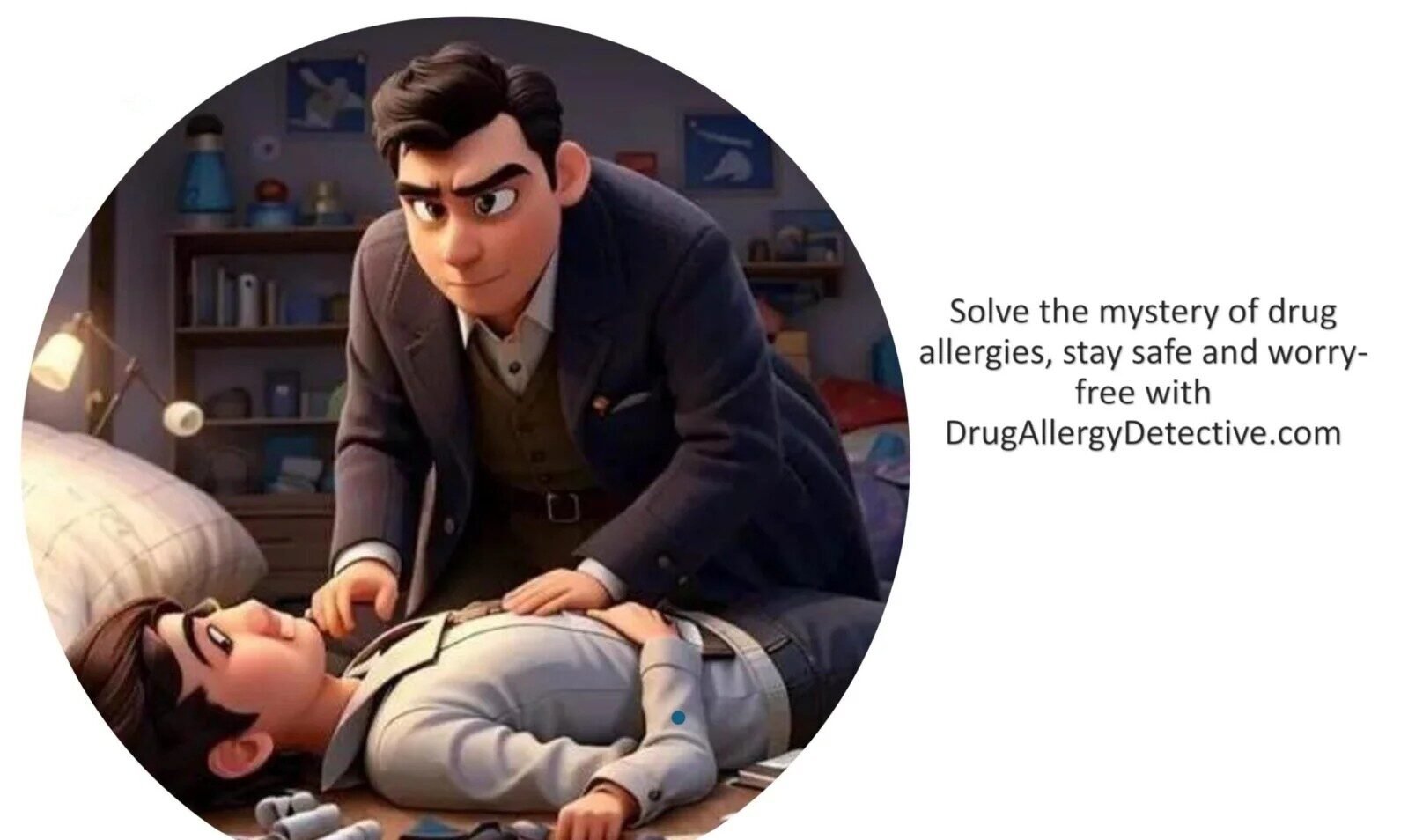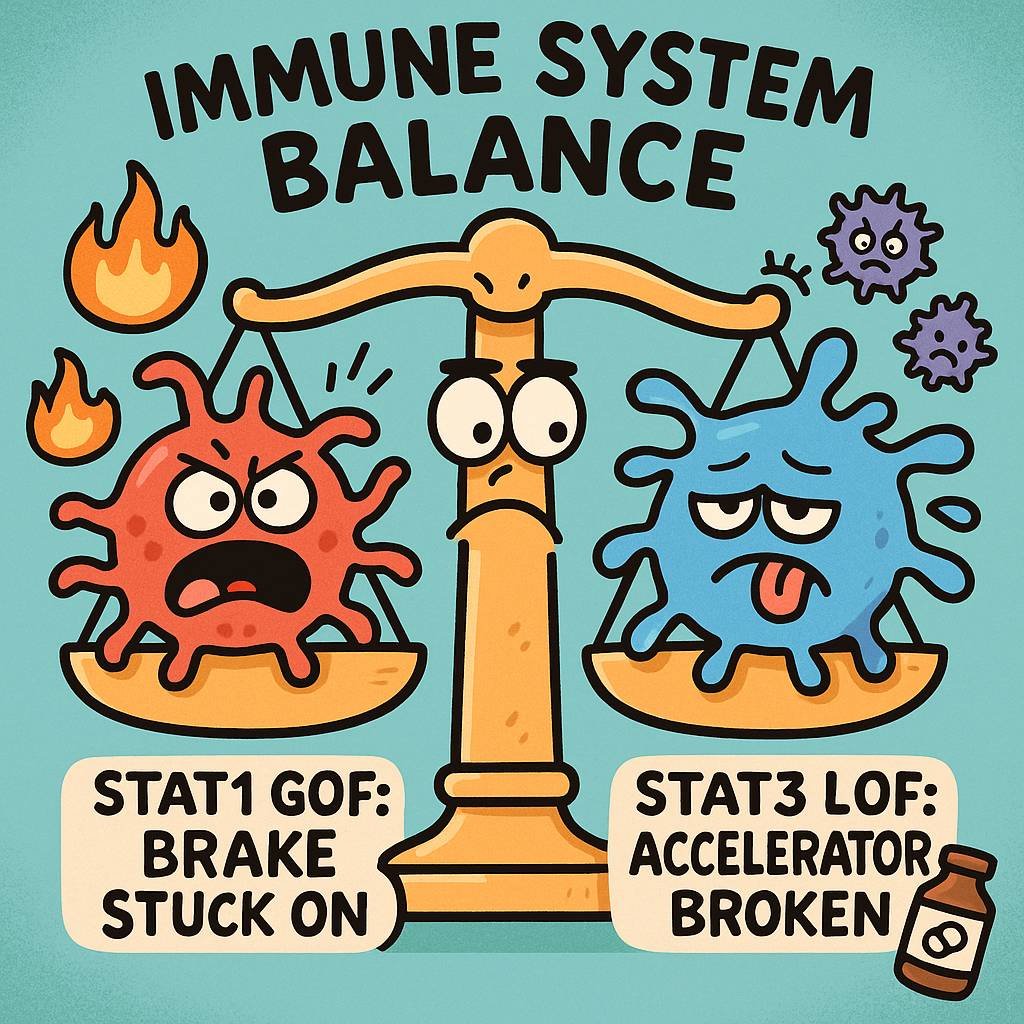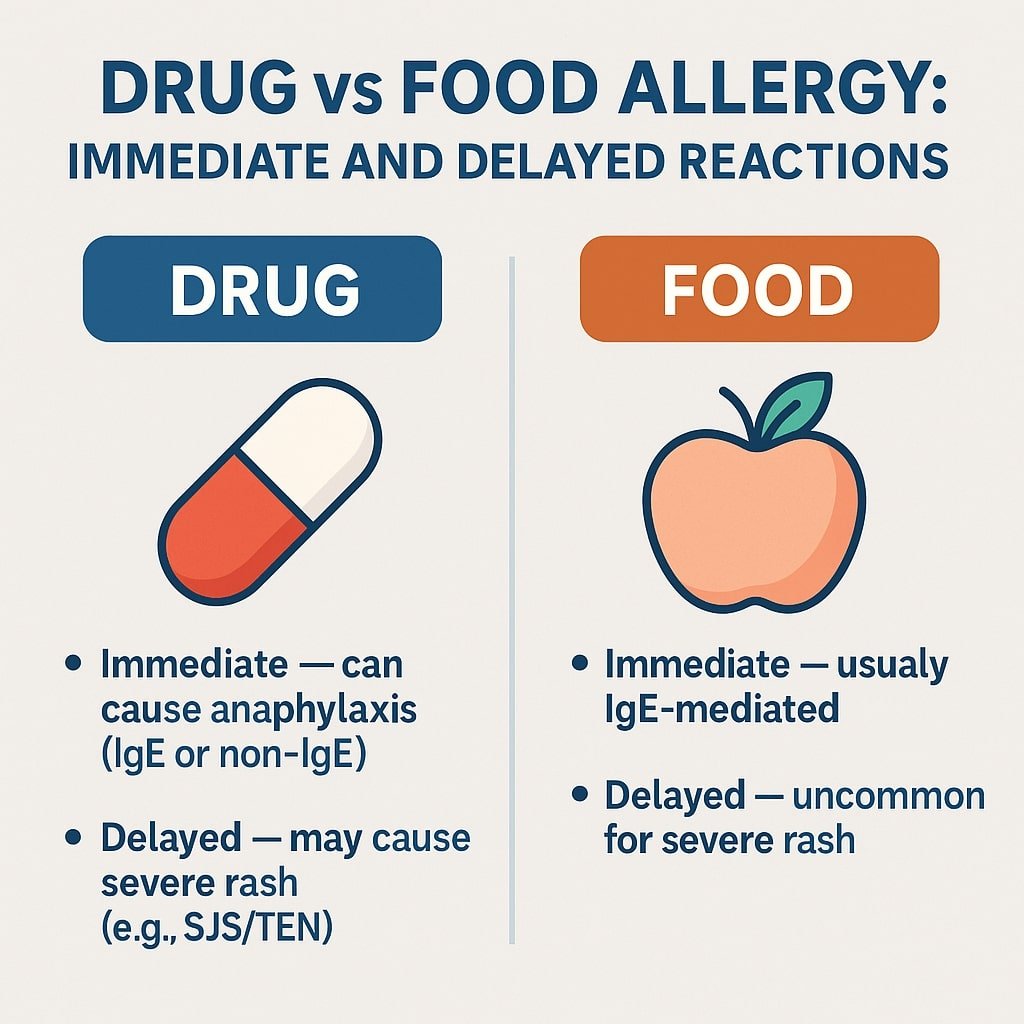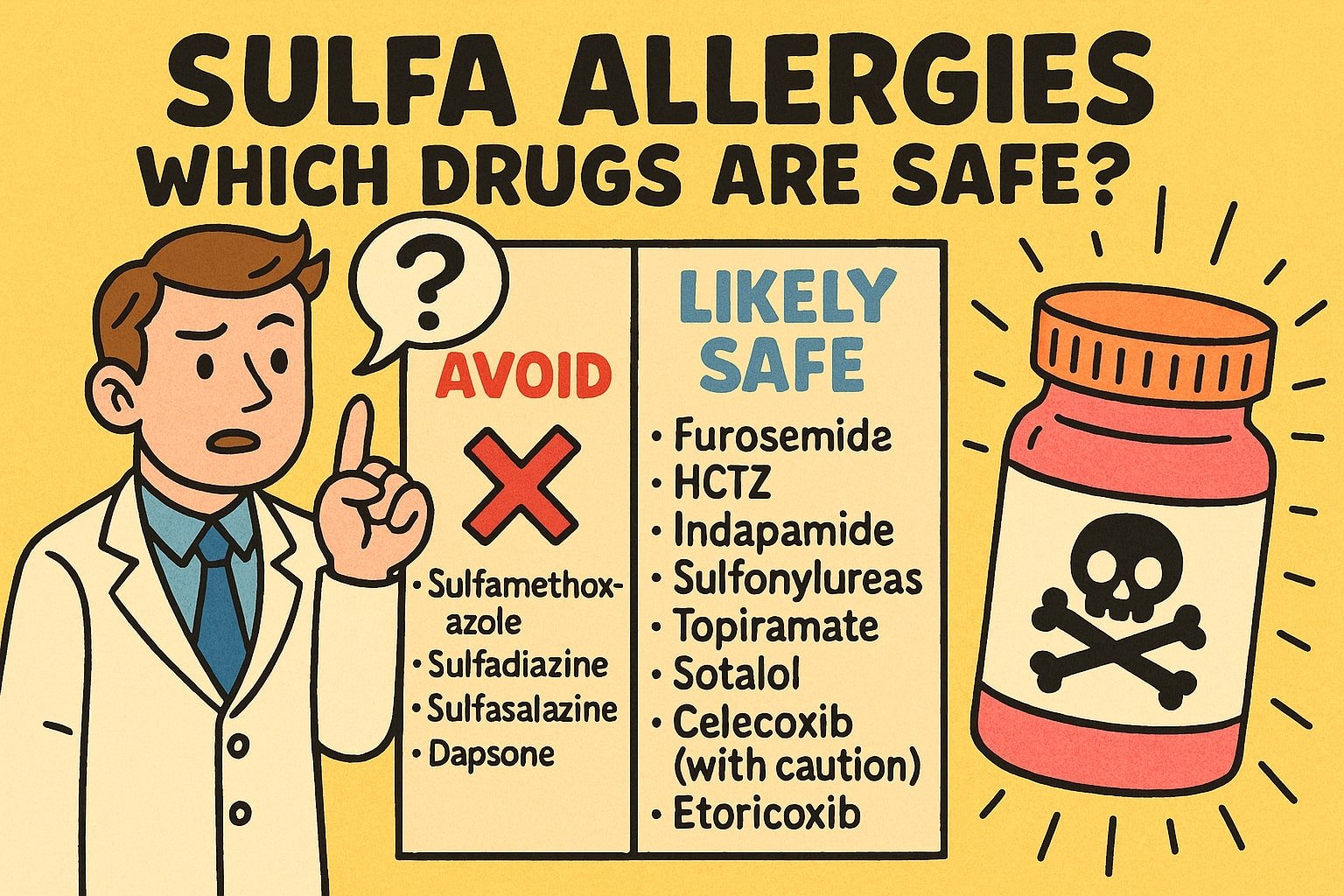Educational Content Disclaimer This article provides educational information about rare immunodeficiency disorders. It is not medical advice and should not replace consultation with qualified healthcare providers. Individual presentations vary, and management should be personalized under medical supervision. 🔗 Why This Matters for Drug Allergy Detective At Drug Allergy Detective, we focus on helping you understand drug allergies and hypersensitivity reactions. But to truly understand why certain people react to medications differently, we need to explore the immune system’s foundation. This article explores two rare genetic conditions that represent opposite extremes…
Read MoreCategory: Basic Knowledge about Drug Allergy
Basic knowledge about drug allergy for advanced reseach and proper management
Drug vs Food Allergy: Immediate & Delayed Reactions
Drug vs Food Allergy: Why Medications Can Cause Both Immediate and Delayed Reactions — While Foods Uncommonly Cause Severe Delayed Reactions This article is for educational purposes only. Always consult healthcare providers for personalized medical advice. Patients often ask:“Why can medications cause both rapid allergic reactions like hives or anaphylaxis and dangerous delayed reactions such as Stevens–Johnson Syndrome (SJS) or Drug Reaction with Eosinophilia and Systemic Symptoms (DRESS), while food allergies almost always appear immediately?” The difference lies in how the immune system processes drugs versus foods — and in…
Read MoreSulfa Allergy: Safe Drugs, Drugs to Avoid, and How to Think About Cross-Reactivity
Many patients search online for sulfa allergy safe drugs after experiencing severe reactions to antibiotics such as co-trimoxazole (trimethoprim-sulfamethoxazole). When people hear the term “sulfa allergy,” confusion often follows. Some patients wonder if they must avoid every drug with “sulfa” in the name. The truth is: not all sulfa-containing medications are dangerous. The key is understanding the chemical structure—specifically whether the drug contains the N4 arylamine group. The Real Culprit: The N4 Arylamine Group The allergy risk in sulfonamide antibiotics comes from a specific chemical feature known as the N4…
Read MoreChemotherapy Hypersensitivity Reactions: Immediate vs. Non-Immediate Responses and How to Manage Them
Introduction Hypersensitivity reactions to chemotherapy—ranging from mild rashes to life-threatening anaphylaxis—can complicate treatment and require expert diagnosis and management. Immediate Reactions: Diagnosis and ManagementImmediate hypersensitivity reactions to chemotherapies are relatively common and easier to confirm compared to non-immediate reactions. Symptoms such as urticaria, wheezing, or anaphylaxis often appear during or shortly after drug administration. In some cases, nausea, vomiting, or back pain may also occur as part of anaphylaxis symptoms, though these are less typical and can overlap with side effects of chemotherapy itself. Key Diagnostic Tools:• Skin Testing with…
Read MoreUnderstanding the Evolving Landscape: New Nomenclature for Allergic Diseases and Hypersensitivity Reactions
Recent advances in immunology have deepened our understanding of allergic diseases and hypersensitivity reactions. Traditionally classified using the Gell-Coombs system (Types I-IV), the increasing complexity of these conditions has led to a proposed new nomenclature, especially for Type IV hypersensitivity. This blog provides an overview of the new classification and its clinical implications. Overview of Traditional Hypersensitivity Classification The Gell-Coombs classification includes: Here are the novel classifications of hypersensitivity reactions according to the new European Academy of Allergy and Clinical Immunology Position Paper published in Allergy. 2023 Nov;78(11):2851-2874. and…
Read MoreDrug Allergy Testing: A Comprehensive Guide
Available Drug Allergy Skin Tests Drug allergy skin tests play a crucial role in diagnosing potential allergic reactions to medications. Among the most common tests are the prick test, intradermal test, and patch test. Each of these tests has specific methodologies, applications, and diagnostic capabilities. The prick test, also known as a scratch test, is frequently used to identify immediate allergic reactions. During this test, a small amount of the suspected allergen is placed on the skin, usually on the forearm or back, and the skin is lightly pricked with…
Read More





